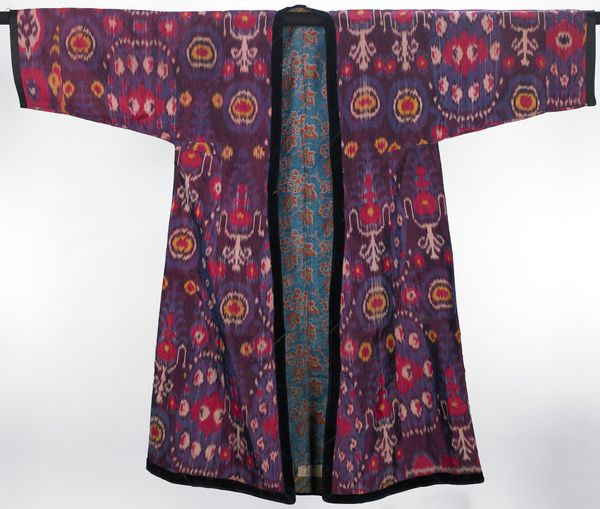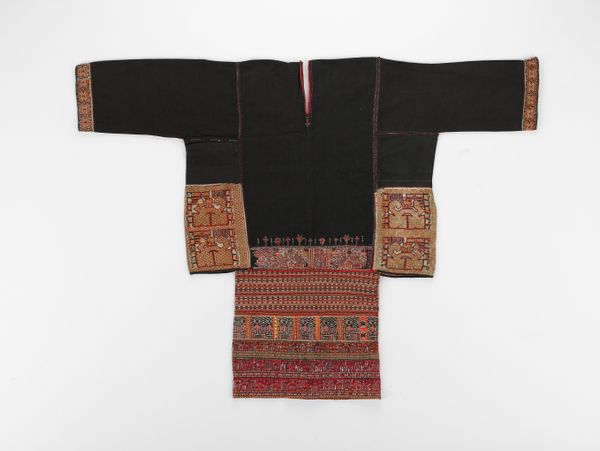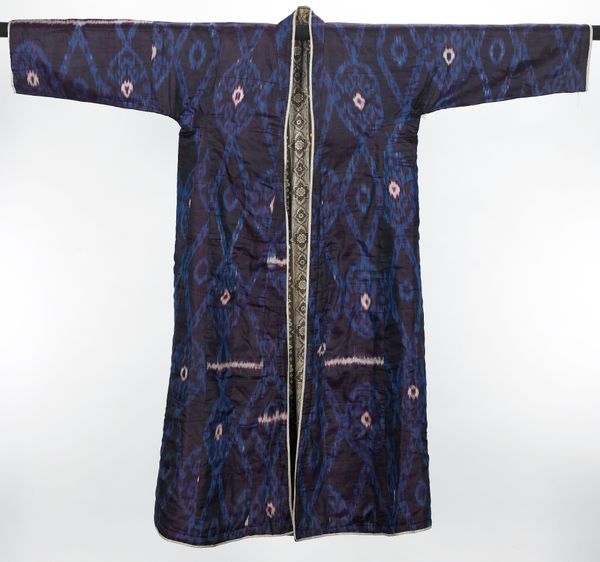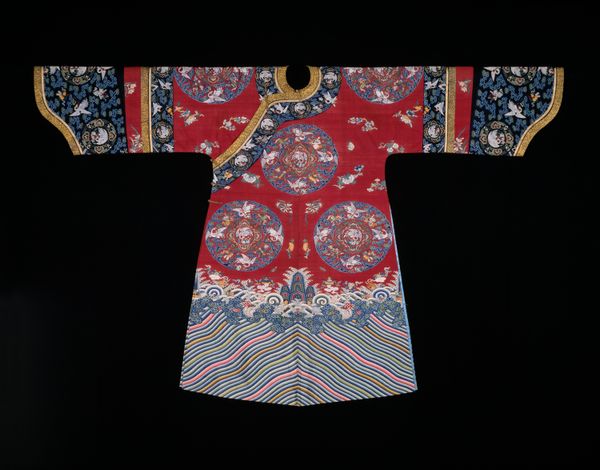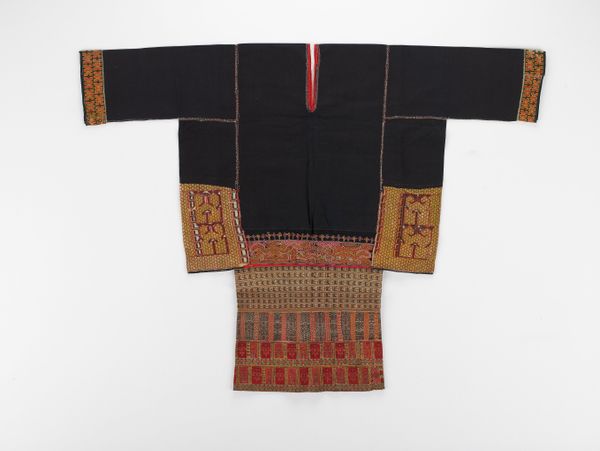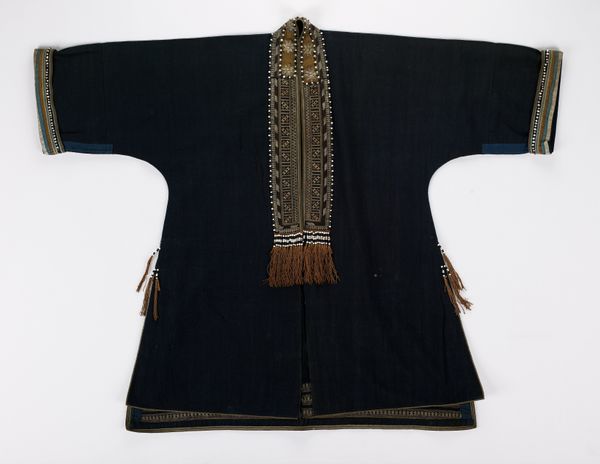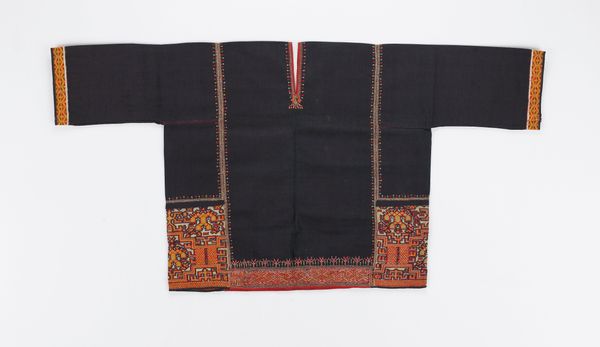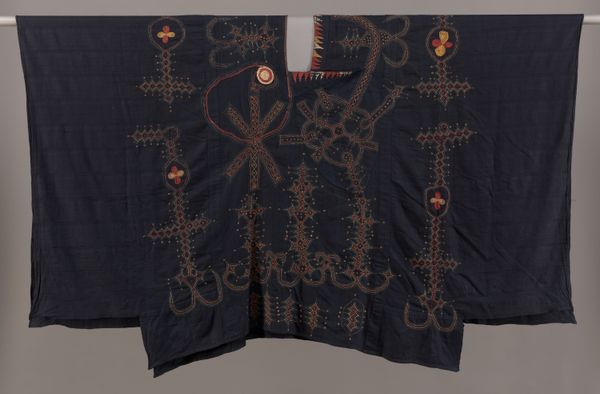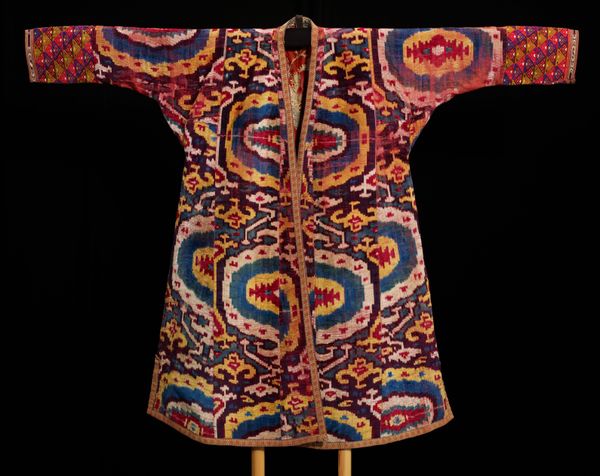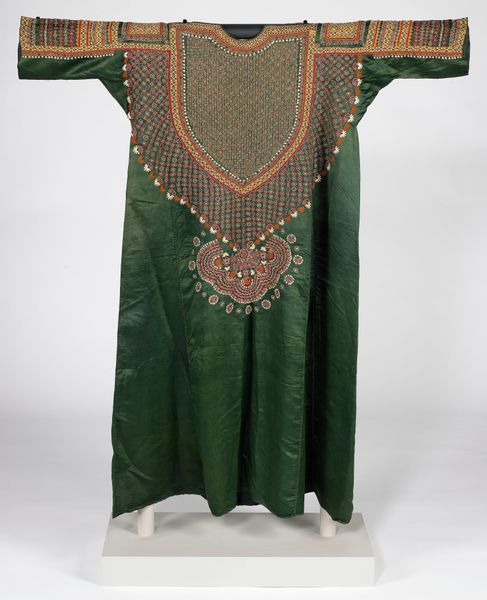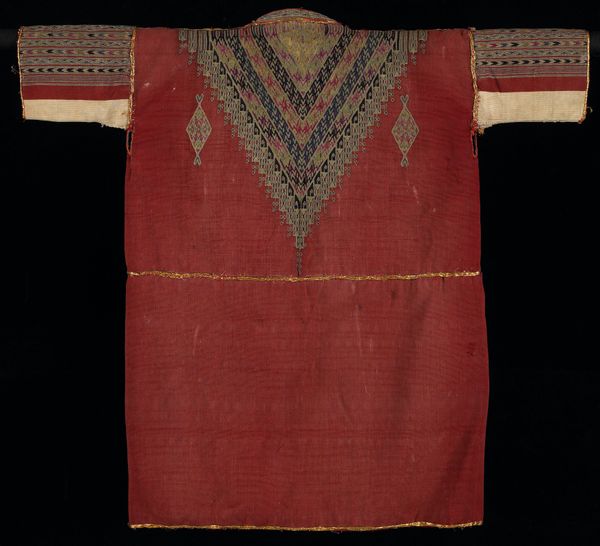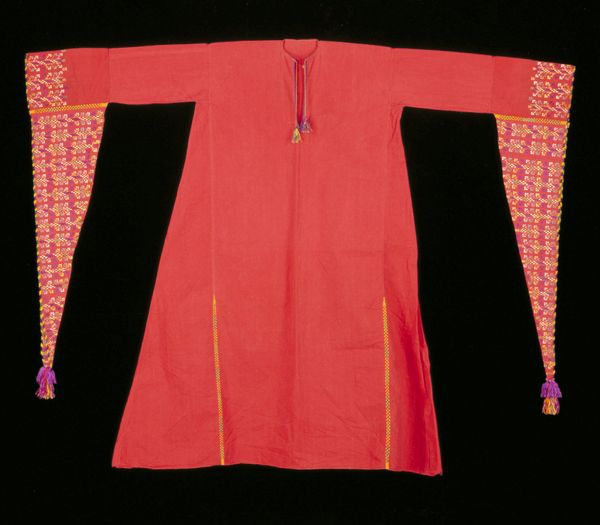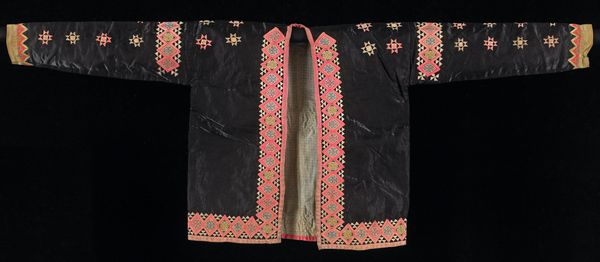
fibre-art, textile
#
fibre-art
#
textile
#
geometric
Copyright: Public Domain
Editor: Here we have a piece entitled "Dress" created around 1940, its maker is unknown, and it now resides at the Minneapolis Institute of Art. It's fiber art, with stunning geometric designs. What is your interpretation of this work's historical and cultural context? Curator: Well, let's think about the term "dress" itself. This isn't simply an item of clothing; it’s a potent signifier of identity, status, and cultural affiliation. A garment like this, produced in 1940, makes us ask questions. Who made it? And for what purpose? Editor: So the materiality of the "dress" helps the understanding? Curator: Absolutely! Fiber art, and especially textiles, have often been historically relegated to the domestic sphere, seen as “women’s work” and therefore less valuable artistically. The intricate embroidery using geometric designs could indicate cultural origins connected to the patterns we identify with orientalism or reflect cross-cultural interactions that shaped design sensibilities. Why do you think museums choose to display such a piece today? Editor: That's fascinating. It's like the museum is validating the cultural history by putting this garment on a platform to challenge previous established social values. I had not considered it could be linked to power dynamics of what is and isn't valued. Curator: Precisely. This work creates a link that can educate museum visitors about women's labour and artistry, traditional crafts, and historical or contemporary modes of cultural representation, and more broadly how we choose to represent that history within these public institutions. Editor: This shifts how I view textiles altogether. Thanks! Curator: My pleasure. Seeing art as a social and historical marker enriches the experience.
Comments
No comments
Be the first to comment and join the conversation on the ultimate creative platform.
